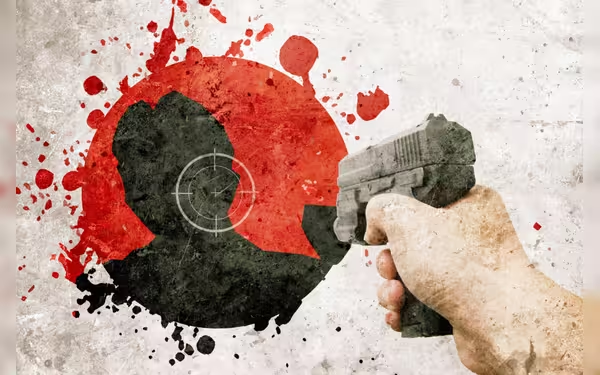Saturday, November 16, 2024 05:30 PM
Trump Assassination Attempt Highlights Political Dangers in America
- FBI investigates assassination attempt on Donald Trump.
- Trump previously shot in July during campaign rally.
- Historical context of presidential assassination attempts.
 Image Credits: arabnewspk
Image Credits: arabnewspkThe FBI investigates a recent assassination attempt on Donald Trump, highlighting the ongoing dangers faced by political leaders in the U.S.
In a shocking turn of events, the FBI is currently investigating what has been described as another assassination attempt on Donald Trump, the Republican presidential candidate and former president of the United States. This incident took place on a sunny Sunday at the Trump International Golf Club in West Palm Beach, Florida, where Trump was enjoying a round of golf. Law enforcement officials reported that the Secret Service spotted a man hiding in the bushes with a rifle, prompting them to take immediate action and fire at the suspected assassin. The suspect managed to flee but was later apprehended on a nearby highway.
This recent event serves as a stark reminder of the dangers faced by political leaders in the United States. Just a few months prior, in July, Trump was shot in the ear during a campaign rally in Pennsylvania, an incident that the FBI classified as an attempted assassination. The Congressional Research Service has documented that there have been at least 15 direct assaults on presidents, presidents-elect, and candidates, with five of these attempts resulting in death.
Throughout American history, the threat of assassination has loomed large over its leaders. Four U.S. presidents have been assassinated while in office: Abraham Lincoln was killed in 1865 by John Wilkes Booth, James Garfield was shot in 1881 and succumbed to his injuries two and a half months later, William McKinley was assassinated in 1901 by an anarchist, and John F. Kennedy was tragically shot in 1963 while riding in a motorcade in Dallas, Texas.
However, not all attempts have been successful. Four presidents have survived assassination attempts. Donald Trump, for instance, was shot in the ear during a campaign speech in Pennsylvania on July 13, but he was quickly rushed to safety by his security team. Ronald Reagan was shot in 1981 outside the Hilton Hotel in Washington, D.C., but he survived after a bullet ricocheted off a limousine and struck him. Gerald Ford faced two assassination attempts in less than three weeks in 1975 and emerged unscathed. Theodore Roosevelt was shot in the chest in 1912 while campaigning but insisted on finishing his speech before seeking medical attention.
Other notable figures have also faced similar threats. Robert F. Kennedy, a U.S. presidential candidate and senator, was assassinated in 1968 at the Ambassador Hotel in Los Angeles. Alabama Governor George C. Wallace was shot in 1972 while campaigning for the Democratic presidential nomination, resulting in paralysis from the waist down.
The frequency of these incidents raises important questions about the safety of political figures and the measures in place to protect them. As the political landscape continues to evolve, it is crucial for authorities to remain vigilant and proactive in ensuring the safety of those who serve the public. The recent events surrounding Donald Trump remind us that the risks associated with political life are very real, and the need for security is paramount. As citizens, we must reflect on the implications of such violence and advocate for a political environment where dialogue and debate can flourish without fear.













